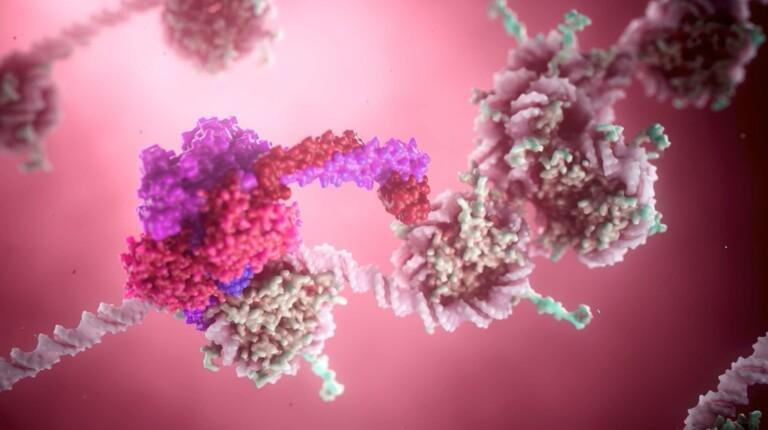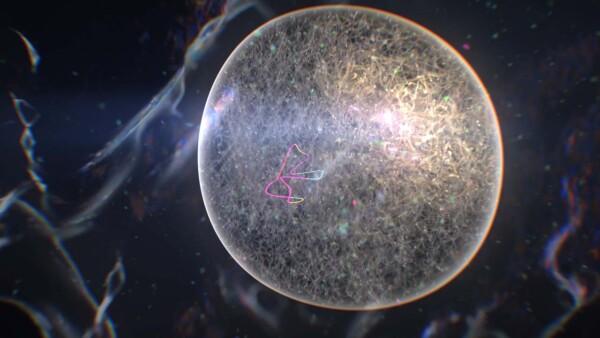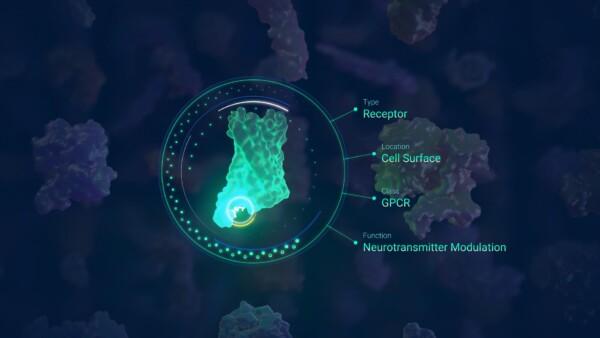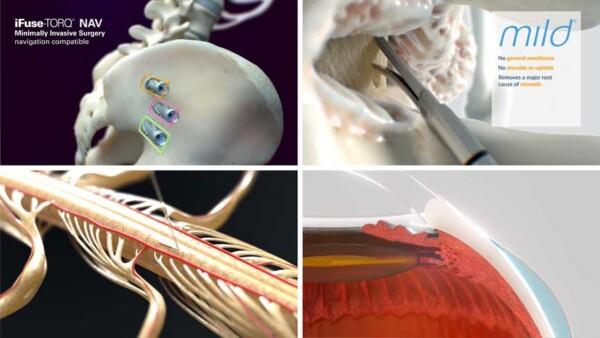
How to Choose the Best Medical Animation Company For Your Needs
By Olivia Slayden
You may have noticed, after doing a quick search, that there are hundreds of medical animation companies out there that specialize in scientific storytelling. If you’re reading this, chances are you’ve never worked with one, or you have but the experience was sub-par and you’re looking for a different provider.
As you reach out to the ones that catch your eye, what clues can you find to tell you what your experience will be, and whether they’ll give you an end product you can be proud of? Medical animation can be a significant cost investment for your company, but if you’ve spent any time in the field, you know that it is an industry standard communications tool.
If you give me 10 minutes, I can tell you everything you need to know to find the best medical animation company out there to explain your technology (or at least, the best possible studio within budget).
Typically, a medical animation company is considered a top player when it combines scientific accuracy with appealing visuals. I contend that it's a little more nuanced than that, and there are more factors to consider.
The best medical animation companies stand out in the following areas:
Let's explore this in more depth now so that you can determine which medical animation company is the best for your needs. I will even provide concrete, practical methods you can use to evaluate each prospective studio yourself.
Production Quality
Like all products and services, medical animations come in varying levels of quality. Ultimately, the production quality in medical animation comes down to 5 things:
- Visual Quality
- Storytelling
- The Talent
- Workplace Environment, and
- The use of Advanced Technology and Techniques
Visual Quality
Before signing with a medical animation company, I invite you to look closely at the various medical animation styles out there. You will quickly notice that some are more cinematic while others are less developed.
The best medical animation companies understand that crisp, clear, high-definition animations can make a difference in how the material is perceived and understood. They also understand that the intricate details of medical processes require impeccable precision and accuracy.
By partnering with a company that prioritizes top-tier visual quality, you ensure your medical content and brand stand out, are memorable, and effectively communicate as intended.
Conversely, subpar animations might undermine your marketing goals or worse: They can misrepresent medical information, leading to potential misunderstandings, eroding the viewer's trust, and diminishing the overall impact and credibility of the content.
Storytelling
A good animation, whether scientific or not, tells a story. I won’t go through Joseph Campbell’s theories on myth and the hero’s journey or the subsequent work of Christopher Vogler regarding story structure here, but, basically, humans evolved to learn through stories.
Additionally, there are specific beats in storytelling that, when met, make stories more engaging and memorable.
The best medical animation companies will use this knowledge to both captivate and educate their audiences. Believe it or not, these lessons learned in fiction writing over the millenia absolutely have a place in medical videos.
For example, doctors experience the hero’s journey with the new device as their sword in medical device animation. Mechanism of action animations contain such story beats as the inciting incident, confrontation when the disease (antagonist) almost overcomes the human body in some way and then, finally, hopeful resolution when the new therapeutic (protagonist) saves the day.
Because of the hundreds of scripts we’ve written specifically for medical animations, we always ask for the opportunity to take the first crack at the script in-house. We’ve found, over the years, that this works best. That said, we have also collaborated with science writers on our clients’ teams on many occasions.
| What You Can Do |
| You can determine both visual and storytelling quality in the same way: by watching a few of the medical animation studio's animations- in their entirety. If entire animations are not available on their website, check YouTube and Vimeo. You can also, of course, just ask for a few sample animations from the company directly. Most animation studios can produce great moments, but short clips won’t give you a sense of their ability to maintain quality throughout, maintain a cohesive look, or tell a proper story if you don't watch from start to finish. These animations are typically only three minutes long at most, so it won't take a great deal of your time. And suppose they can’t provide you with a short video to watch easily. In that case, that's another important data point about their approach. |
The Talent
In a services industry such as medical animation, quality level will always depend upon the talent of the people producing your work. Let’s explore how experience and natural ability can affect the quality of your finished animation in more detail.
Experience
It’s true that some inexperienced artists are unusually talented, but I posit that it takes a few years to truly understand the industry. If a company you’re considering has vastly more animators with 0-3 years in the field, that will impact their maximum production quality and the level of nuance they are likely to bring to your project. This is a major way that some companies keep costs low.
As a smaller, boutique animation studio, we prefer to avoid potential issues by finding medical animators with a few more industry years under their belts. We don’t, for example, hire animators right out of graduate school. We are happy to provide them with internships, but they are for the artist’s educational benefit only- not for our clients’ projects.
A Keen Eye and the Drive to Implement It
Experience can only get you so far. The best medical animation companies also hire true artists.
Some people just have an eye for what makes something beautiful and the drive to push their own limits. Attention to lighting, materials, camera effects, and the development of a coherent look that is unique to each story is a tall order, and not every group is up to the task.
And then innate ability has its limits. A great artist also has the drive to create groundbreaking work. In medical animation, there are often easier but less-than-stellar ways to do things that still yield acceptable results. Corners can be cut. True excellence often demands more.
| What You Can Do |
| First, check the medical animation company's team page or employee profiles on LinkedIn. If experience and authority are a major theme, then you're in good shape. As for whether the artists at the studio have that something special, take a look at the company’s portfolio again. Does it stand out amongst their competitors’ portfolios? Do they use the same colors and lighting on every project? Do their animations glow and linger in your mind after you watch them? If their best work doesn't blow you away, you will likely be disappointed with the animation you commission as well. |
Workplace Environments: Time and Resources
Some companies keep costs (which can be considerable) down by overloading their animators. I recently learned of a medical animator who had to leave their last job at one of the nicer studios because they were working 80-hour work weeks on a regular basis. I think we can all agree that this is not a recipe for success.
Animators with too many projects and not enough time to do any one of them well cannot give you quality work, no matter how talented they are.
| What You Can Do |
| I’ve thought of one way for you to screen companies for these practices: employer review sites. Many of the same sites that help employers and employees find each other such as Indeed or Glassdoor also provide these reviews. Employer reviews might not be available for most of the companies in our industry, as our studios are often small. The community is also small, and an animator might not want to be seen as a complainer by other potential employers. Furthermore, you will always see reviews from disgruntled employees that aren’t being fair. All of those many caveats aside, if you see a significant number of complaints- far more than positive- then you might want to reconsider. |
Advanced Technology and Techniques
I can tell you that animators care a lot about the technology they use. Aside from the scientific discussions, this is where my outsider status as a non-medical animator is made most obvious to me on a regular basis. It's all splines, deformers and, "Did you check your cloner/matrix/voxel/simulation settings?" all the time over here. For whatever reason, these weren't covered in my marketing and psychology studies.
Technology
The best medical animation companies pay close attention to the software, hardware, and rendering solutions they use and update as necessary. This makes animations more realistic, interactive, and engaging. Also, cutting-edge tools unlock cool effects that were difficult, if not impossible, to use earlier, and they can often drastically improve efficiency.
To get a better idea of what your typical animator has to consider when it comes to hardware and software, take a look at this post on how to build a medical animation workstation. It's a real eye-opener and useful too if you ever want to buy a tricked-out computer for that gamer in your life (...or self. No judgment here).
Technique
You don't see this from your end, and as an animation outsider within the company, I only glimpse it: medical animators are constantly solving problems. How do I show the individual cells of the cornea when they're all transparent? Why did updating my graphics driver break my 3D program? How do I simulate a protein unraveling without setting my computer on fire?
It won't matter that you've purchased the best software packages for the task if you don't know how to use them. The best medical animators keep up with the latest techniques, and are able to solve the problems that will inevitably arise on a regular basis.
We have Slack channels, message boards, and Discord servers dedicated to technical problem-solving, and we use them. Medical animators are great at collaborating and helping each other out. We also keep up with the newest trends and tools in software, hardware, and developments in the medical animation industry. We achieve this through various news outlets, direct relationships with software companies, and the AMI.
| What You Can Do |
| Again, the way to check on this is to look at samples of their work. Higher-end graphics require higher-end software, hardware, and rendering solutions, as well as experience and problem-solving ability. The more cinematic and complicated effects do as well. Detail and nuance in the scenes they build and how they present them cinematically reflect a deeper understanding and passion for the tools of the trade. |
Creative, Video and Marketing Awards
This is not a factor. Rather, it's another metric for examining a medical animation company's production quality. Check out their awards!
How many do they have? How difficult is it to win one of these awards (entrants vs. winners)? When was the last time they were recognized?
I should mention that a lack of awards does not necessarily show a lack of quality. One must enter these contests first, and not every studio uses their resources in this way.
We do, though. It not only shows the world that we know what we're doing, but we believe our artists deserve recognition for their hard work.
| What You Can Do |
| Most medical animation companies you're considering will boast about their achievements on their site, including their blog. If there's no blog or spot for awards, a quick social media or web search might yield results (although they really should be bragging on their site). If you don't mind doing a quick search, a few of the awards venues you might want to check out are the Association of Medical Illustrators annual Salon, Communicator Awards, Telly Awards, Muse Creative Awards, and SIGGRAPH's electronic theater. The larger agencies might even have a Clio (Sigh. One day). Sadly, none of us win Academy Awards or Emmys… yet (Life goals). |
I'll summarize my thoughts on production quality this way: The best outcomes come from medical animation companies that not only have optimal workplace environments but also invest in talent with superior aesthetic instincts that continuously push their own limits.
Scientific Accuracy
You have likely heard the old adage, “Don’t let the facts get in the way of a good story.” Well, not in scientific animation. For a scientifically literate audience, even a minor oversight or error can be intolerable and prove catastrophic to a client’s brand trustworthiness.
At its core, medical animation is about conveying complex medical and biological concepts. It's essential that these animations are scientifically accurate. Otherwise, they can be misleading and potentially damaging to your reputation amongst peers, investors, or other audiences.
It won't matter if your medical animation is beautiful if it's more science fiction than hard science. This is why almost every medical animation company mentions it on their website and why we guarantee accuracy beyond final delivery.
| What You Can Do |
| One easy way to tell if the medical animation company you're vetting values or is capable of accurate science, again, is to view a few examples of their work. Then, look for omissions, errors, and style choices. Are the cells or molecules properly proportioned to one another? Are the organs reversed or in the correct place? Do the vessels look like tree branches? Is their DNA turning the correct way? You would not believe how often it isn't. |
Scientifically Educated Artists
Please trust me when I tell you that you will do far less hand-holding and waste far less time and money if you hire medically-trained artists from the beginning.
The best medical animation companies employ teams that not only have artistic skills, but also have extensive knowledge of biological sciences and medicine. This ensures that the content is not only visually stunning but also meets the coveted above criteria of being scientifically accurate and nuanced.
At Microverse Studios, we do this by only hiring animators with a master’s degree in medical illustration and animation. This area of study doesn't just teach visualization techniques unique to scientific topics. Medical illustration and animation students take various anatomy, physiology, and molecular and cellular biology classes alongside medical students.
Medical illustration students even take surgical classes and observe and draw surgeries in the OR. They even have specific coursework in how to tie surgical knots. They do these things in order to truly understand the human body and to view it from the surgeon's perspective. The truth is that there is no better way to experience true-to-life colors, textures, and fluid dynamics or to better understand how tissues are organized and interact than through live surgery.
Education does not end here, however. The best medical illustrators may then seek certification from The Association of Medical Illustrators (AMI), a nearly 80-year-old organization dedicated to maintaining industry standards. The AMI requires ongoing education, and recertification occurs every five years.
You'll know a medical animator or illustrator is certified if there's a nifty "CMI" in their title. We don't push for recertification, but we do ensure that our animators can attend the AMI's annual meeting if they wish. The meeting is not only packed with continuing education lectures, but it's also a great way to keep up with the industry as well.
| What You Can Do |
| Check to see if the medical animation company you're considering has animators with master's degrees. If they have never heard of medical illustration-specific programs or the AMI, then I would think twice. To be fair, these are North American programs. As of this writing, I am not aware of any outside of Canada or the United States. At the very least, an animator with a background in the life sciences is preferable. Again, you can check this out on their team page or LinkedIn. |
One of the medical animators on our team recently explained that non-medically trained artists will often pull reference materials from dubious sources such as Google Images or AI. They may also use diagrams from scientific papers, not understanding that these are overly simplified.
Animators with specialized training have a deep understanding of anatomy and cell biology. They also know where to look when further research is necessary.
Personal Attention, Flexibility, and Customization
The best medical animation companies operate with a more customer-centric paradigm. This means they are attentive to their clients’ specific needs, are adaptable, and provide custom solutions for unique scientific concepts and brand identities.
This dedication to client-centricity not only fosters strong, collaborative relationships but also drives outcomes that genuinely align with a client's vision and objectives.
Personal Attention and Flexibility
Great medical animators ensure that they truly understand the story their clients are trying to tell and to whom, and adapt as necessary. They will get to know all of the science surrounding your story, and then propose a way of telling it that takes into account your brand voice, your underlying value proposition, and what the audience already knows or doesn’t know. The end product will be designed to be an optimal communications tool that is customized for your unique circumstances.
We take it a step further and make the medical animator the lead on every project. Our creative director and project manager are also involved, but this setup ensures that the animator is involved in every discussion. This makes for more streamlined communications and eliminates the dreaded game of telephone that can cause confusion and delay.
Perhaps most importantly, the best medical animation companies involve their clients at every stage of production. They should not only be open to your feedback, but they should require client buy-in before moving on to the next phase- from script to refinement. By the time final delivery rolls around, you should never be surprised with how the finished animation looks and tells its story because you were involved at every stage.
Customization
As buyers, we sometimes assume that finding a larger agency is an easy way to satisfy our requirements. While their numbers may create an illusion of greater experience or proficiency, I’ve observed that 100-person studios can have difficulty maintaining a consistent standard of quality.
Simply put, you may get their A team… or you may not.
These larger medical animation companies, among others, have found strategies to tackle this issue and uphold quality standards. Two common methods stand out to me.
The first involves adopting a more homogenous style. In this instance, a medical animation company can be identified by their animations before you even see the credits.
It's a small world. Imagine what happens when the studio inevitably creates an animation for one of your competitors (or has already). Will both of your animations look the same? What happens if your audience is confused and believes one belongs to another?
The second method some studios use to guarantee a certain level of quality involves employing a more assembly-line production process. Each group is always responsible for a specific step in the process- even down to the wire-framing and applying textures.
While these two approaches assure a more consistent product, they also risk sacrificing project uniqueness and the client’s ability to stand out amongst competitors.
| What You Can Do |
| Look at their portfolio for a diversity of styles and therapeutic areas. Diversity in therapeutic areas will reveal the company's ability to handle a wide range of topics. The diverse styles will show that they treat every project as its own adventure, including yours! Then, check out their production process on their website or in the contract. Does it include an initial discovery phase that discusses style? What about a clear revision cycle? If not, I recommend that you seek clarification directly. |
Professionalism
Of course, the best medical animation companies are also professional.
I won’t insult your intelligence by going too deeply into what professionalism is. I’m sure you know it when you see it, so I’ll try to stick with the most important, creative-industry-specific observations.
The most professional medical animation studios will:
Communicate Regularly and in a Timely Manner
They do so to ensure alignment with the client's vision and objectives. Regular communication fosters transparency, builds trust, and allows for immediate feedback, ensuring that any required changes or adjustments can be made in real time. By maintaining an open dialogue, the agency can deliver results that truly resonate with the client's expectations and needs.
Furthermore, professional animators will never neglect client emails. While occasional oversights can happen during peak periods, such instances should be rare exceptions rather than the norm.
In tight-turnaround, high-feedback scenarios, they might also offer real-time communication tools such as Slack in order to accelerate project completion and avoid issues altogether.
Provide Deliverables on Time
Medical animations include multiple deliverables at various stages of production. Professional studios will be clear about what these stages are and deliver them on time. They understand that you, too, have deadlines to meet and will let you know as soon as possible when they have run into an obstacle.
Conduct Business with Transparency and Honesty
The best medical animation companies operate with complete transparency in areas such as billing, project updates, and potential issues or challenges.
A lot of what we do is magic that takes place inside a black box. It's easy to exclude the client or tell them it's too complicated to explain. Being clear about what our protocol is for every project is essential to maintaining client faith.
| What You Can Do |
| Personally, if I were to hire a large creative services firm to complete a significant project for me, I would not be shy about asking for references. That way, I could get a sense of their customer experience. Of course, that can take time you don't have, but I would give it a try if possible. A company's reluctance to provide one could serve as a red flag. And then another way to evaluate a company's level of professionalism is to check out their testimonials. Of course, you’ll never find a negative one, but it doesn’t hurt to see who has trusted the company enough to put their reputation on the line by recommending them. You might even consider reaching out to that person on LinkedIn if you're a close connection. |
Next Steps
Ultimately, choosing a medical animation company depends on your specific needs and budget. High-end graphics or customization might not be a priority for you. Your story might not require scientific knowledge, and could be easily and immediately understood by the layperson. You might have extra time to help the animator along.
If these are true for you, then a non-medical or budget animation company could work. There's no need to search for a zebra when a pony will do.
If you would like to at least see what one of the best medical animation companies has to offer, then why not try us? We produce quality scientific animations every day and might surprise you with our value proposition.
Set up a quick, yet comprehensive 15-30 minute consultation through our contact form. We could be that zebra you're looking for.
You might also like

As Co-Founder and Chief Commercial Officer at Microverse Studios, Olivia Slayden brings her innovative perspective to the team, constantly challenging the status quo to differentiate Microverse Studios in a competitive medical communications landscape. She is recognized for her strategic thinking, attention to detail, and creative problem-solving. In her spare time, Olivia loves staying updated on industry trends and sharing her insights through the Microverse Studios blog.




